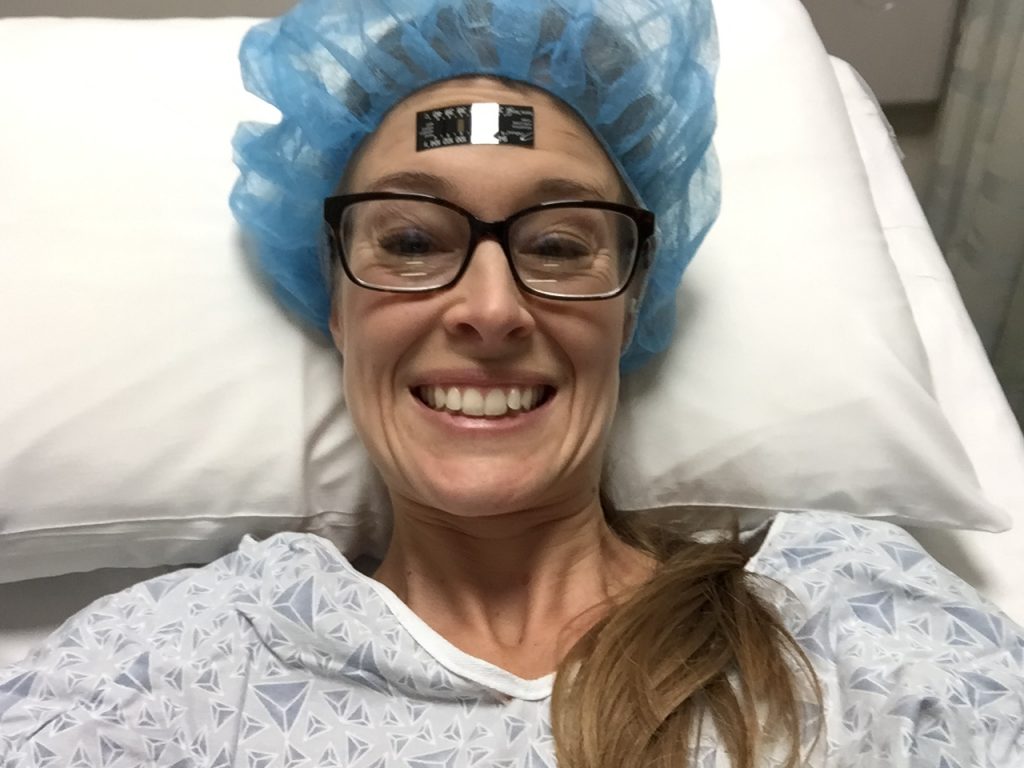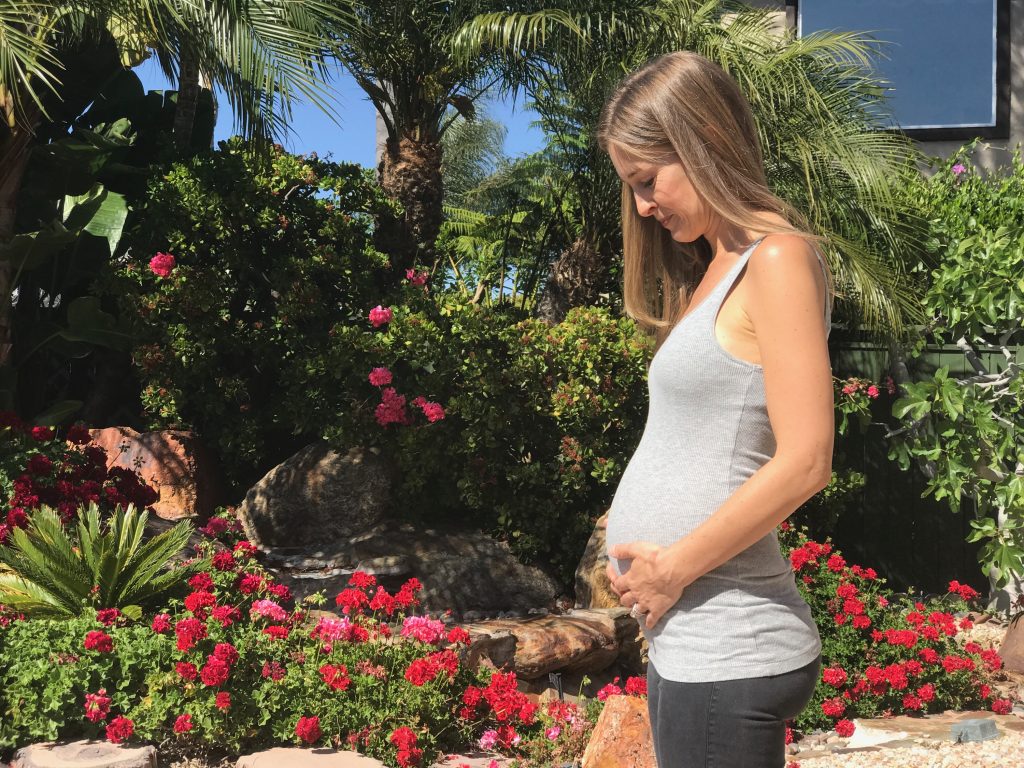To get more in-depth information and learn more about my detailed book on IVF when it comes out, join my mailing list here.

In my last IVF and Infertility post, I talked about a typical IVF cycle and calendar, including the common medications used during the stimming period. If you haven’t read that yet, you may want to catch up before moving on to this post.
Today we are going to discuss the IVF embryo transfer, what comes after the egg retrieval and the various choices you will have to make during this time.
The stimming period is the 10-14 days prior to egg retrieval. The goal during stimming is to stimulate the ovaries to produce high quality follicles and eggs.
This period ends with a surgical procedure that retrieves the eggs from the woman.
During an egg retrieval, the patient is put under anesthesia in order to perform the procedure. As opposed to general anesthesia that’s used during major surgeries, this is a lighter form of anesthesia that simply puts you to sleep for about an hour. The procedure itself takes no more than 30 minutes typically.

The eggs themselves are immediately taken into the lab, where they are put in a dish with your partner’s or donor’s sperm. (If you are using a fresh sperm sample, it is typically collected that morning at home and brought with you to your procedure).
You can expect some cramping and discomfort for a few days after the egg retrieval as you recover from surgery and your ovaries recover from two weeks of intense work and growth.
What comes after the egg retrieval depends on many different factors, including prior discussions with your doctor, the stimming protocol used, your decision to do genetic testing, the number of embryos created and the grade of those embryos.
Fresh vs. Frozen Embryo Transfer
The first decision you will be making with your doctor when it comes to the embryo transfer is whether you will be doing a fresh or frozen transfer.
Up until about five years ago transfers were exclusively fresh. In the case of a fresh embryo transfer, the embryo(s) are transferred either on day 3 or on day 5. (This also depends on your doctor and the growth of the embryos. Typically waiting until day 5 allows the embryos to reach the blastocyst stage and gives a higher likelihood of survival.)
With fresh transfers, the embryos are graded by the embryologist in the lab. They are given a 1-4 grade (with 1 being the best) OR an A-D grade (with A being the best). The kind of grade depends on the stage of the embryo when graded and the lab itself.
Grades are given based on how the embryo looks under a high powered microscope. No invasive techniques are done, as the technology is not available during this process. They simply look on either day 3 or day 5 and make a grade with the best information available at that time.
While the purpose of grading is to help determine the embryo with the best chance of survival when implanted, it’s a very complex issue. Grades can change from hour to hour, minute to minute. I’ve read many stories from doctors and clients who implanted an A embryo that didn’t take, but ended up having a beautiful baby from their B embryo.
My advice is not to get caught up in the grades, but rather to understand the difference between a fresh and frozen embryo transfer and why you would chose one over the other.
Technology has changed drastically over the past five years, which is why many clinics now prefer frozen transfers.
What happens in a frozen transfer is that the eggs are still placed in the dish as normal with the sperm and hopefully fertilized. Once the embryos make it to day 5, they are sent to a lab for preimplantation genetic diagnosis (PGD – also called preimplantation genetic screening, or PGS, in some situations).
PGD uses a small needle to take a few cells from the embryo. Those cells are then tested for genetic and chromosomal abnormalities, as well as the sex of the embryo. As the patient, you will then get that information back and can determine which exact embryo you would like to implant for the best results.
The embryos are then frozen while you and your doctor prepare your body for an embryo transfer (there is an entirely new medication and injection protocol for this).
Once you are ready for your transfer, the embryos are thawed and transferred during the procedure.
The benefit to a FET (frozen embryo transfer) is that, as opposed to simply being graded through a visual scan, you and your doctor will know exactly which embryos are the strongest and most healthy. You will also know if any of the embryos have chromosomal abnormalities that could lead to developmental delays or disease. This typically leads to higher rates of implantation, lower rates of miscarriage and a better chance for a healthy pregnancy and delivery.
Another benefit of frozen transfers for some people is the flexibility of schedule. Once the embryos are frozen, you can wait as long as you would like before setting up an embryo transfer. If you have an important business trip or family visiting, you can plan around that. With a fresh transfer you have to have the procedure at a very specific time.
You should keep in mind that PGD costs money. Our PGD would have cost $5900 extra simply for the genetic testing. There was also then a $2000 fee for freezing and storing the embryos to prepare for the frozen transfer.
Some things to clarify:
– You do NOT have to do PGD. It is completely voluntary and up to you. Most doctors make it sound like everyone is doing it and it’s just part of the package. Some don’t even offer fresh transfers anymore. But it ultimately comes down to you and your desires. It’s an important conversation to have with your partner so that you know ahead of time what you might want to do.
– You can NOT do PDG if you do a fresh transfer. If you do PGD, you HAVE to do a frozen transfer.
I wanted to give you the background on the important distinctions between a fresh and frozen embryo transfer. I think it’s really important to understand the difference, as it will affect so many things about your IVF journey, such as finances, timing and anxiety.

Now that you know the facts, I’ll give you an example from my own life of how these things can actually play out. It will show you that, while you can make the best decisions possible ahead of time, sometimes life will determine the next step for you. It also will show you how imperative it is that you have a doctor you trust and who is willing to adjust the plan to help give you a baby.
Our first IVF cycle involved a typical stimming protocol. We were led to infertility treatments because I had surgery to diagnosis endometriosis and blocked fallopian tubes. Since we were able to have our daughter naturally four years ago, we all logically assumed the major issue was the scarring. We were told we were perfect candidates for IVF.
After our first egg retrieval we only had 3 embryos fertilize. Only 2 of those made it to day 3, and none of them made it to day 5.
None.
We had gone through the first cycle by the book. We planned on genetic testing and a frozen transfer because that’s what was recommended. That’s what was simply assumed.
When none of the embryos made it to day 5, we were left with boxes of medication we had pre-ordered, plans for PGD we didn’t even get to do and broken hearts.
When we went in to consult with our doctor about what had gone wrong, she told us my egg quality was extremely poor. The embryos didn’t make it because they simply weren’t high quality enough.
Due to my age, the amount of eggs retrieved and the quality of the eggs, we were given a 10% chance of another cycle working. Our doctor said that using donor eggs would give us the best chance of success.
We took a lot of time to decide on trying again. Ultimately, we decided we would regret not trying one more time. We also took into account the fact we still had some medication to use, and that my doctor had mentioned doing two cycles back to back (instead of waiting) could help our chances.
I also knew that, emotionally and physically, I had one more cycle left in me.
As we got into our pre-stimming appointments and ultrasounds with my doctor, we discussed the possibility of changing the protocol to one that might produce more eggs or more high quality eggs.
We also discussed the idea of a fresh transfer.
There are some schools of thought out there that believe, when embryos don’t make it to day 5 in the lab (like ours hadn’t), they could possibly be “saved” by placing them in the mother on day 3.
The idea is that the natural environment of the uterus can help an embryo survive that might not otherwise in the lab.
My doctor hadn’t done a fresh transfer in a while, so it wasn’t something she brought up regularly. As I mentioned, most doctors prefer frozen now, as it gives better results and higher success rates because of the genetic testing done.
She asked how set we were on a frozen transfer and genetic testing and I told her honestly we simply didn’t care. We had always been a little on the fence with genetic testing. While our minds knew logically it was the best thing, our hearts had a hard time picturing our little embryos poked and prodded with needles. We just wanted what was best for our embryos and what would give us the best shot at a pregnancy.
My words exactly?
“Just put my babies inside of me.”
So we all agreed that we would do a fresh transfer this round if everything looked like it was heading that way.
There are some things that are needed in order for a fresh transfer to occur. The uterine lining needs to be a specific thickness to encourage implantation, so this is monitored closely during the stimming period. Your hormone levels need to be tracking correctly, and, of course, you need a few embryos to make it to day 3 in order to implant them.
Those things all fell in line for us and we did a day 3 fresh embryo transfer. That means we transferred our embryos three days after the egg retrieval, when they were on day 3 of growth.
*Note – We ended up transferring all three embryos, which again was a very personal decision between my husband, myself, our doctor and the embryologist. Gone are the days where transferring multiple embryos is normal (thank goodness). Typically, with PDG, you would only transfer one embryo, as it gives both the baby and mom the best chance at being healthy. You would then freeze any extra embryos to use at a future date. Our situation was very unique in that we didn’t think any embryos would make it long enough to test or freeze. One was a Grade I and two were Grade II’s, so the likelihood of them all implanting was almost zero percent. I am also 39 years old, which factors into the decisions made. I went into IVF originally thinking we would do genetic testing, a frozen transfer, transfer one healthy embryo and freeze the others to use for later implantations and babies. Plans changed for us so we did what we thought was best with the information we had. Overall I wouldn’t necessarily recommend transferring more than one embryo, but that is a decision for you and your doctor. I’m glad with the decision we made in our specific circumstance.
I am not here to tell you that one is better than the other. I absolutely think genetic testing would help relieve so much anxiety about the development of the baby and the possibility of miscarriage.
That is if you are able to do a frozen transfer. We weren’t.
When I started this journey I was under the impression that everything worked a little like clockwork. You took medicine, you had your egg retrieval, they fertilized, then they transferred them back in.
I assumed the highest risk was whether they implanted or not.
Now I know there are so many other steps and decisions along the way, many of which we don’t have any control over.
My advice is three fold to help with this:
1. Educate yourself. I listened to podcasts (Beating Infertility and Sarah’s Laughter were my favorites) and read blogs (Amateur Nester and Trials Bring Joy are helpful). I learned the language so it wasn’t a foreign language when my doctor spoke. I asked my acupuncturist along the way if she had seen my situation before. Go in armed with knowledge so you can be your own advocate. (But DON’T spend hours on Dr. Google – find positive ways of getting your information that won’t make you sad or discouraged.)
2. Chose a doctor who is willing to change procedures if necessary. I’ve talked to so many women who say their doctor won’t consider a fresh transfer. I say chose another doctor. Not because fresh is better, but because the end goal is a healthy baby, however that happens. Sometimes circumstances change and you want to know your doctor will problem solve with you and think outside the box. You want to be a part of a team.
3. Go with the flow. This is so hard sometimes. But if you are suddenly told you can’t do a fresh or frozen when you wanted to, take a deep breath, have some ice cream, talk to your partner and make the next best decision in that moment. I truly didn’t know we could do our fresh transfer until the day before it happened. I had to wait for blood work to come in, and to see if our sweet embryos had made it that far. IVF and infertility are full of waiting, waiting and waiting some more. Don’t lose site of the end goal just because you hit a snag along the way. Put one foot in front of the other and listen to your gut and heart.

I am honored, overjoyed, humbled and so grateful to tell you we are now 13 weeks pregnant with a healthy baby. Our second IVF cycle with the fresh embryo transfer worked and I’m so thankful every day to be where we are.
I still have anxiety and have spent nights awake with worry. When you’ve been through infertility and IVF there are some battle wounds that take a while to heal, and hope needs to be watered and nurtured again. That doesn’t lesson my gratitude or understanding of just how amazing this pregnancy is. I think of every one of you going through this same journey and say a prayer, as I truly know the struggles and tears that come with infertility. Stay hopeful, keep believing, listen to your heart and know that miracles really can happen.
This baby is a testimony to that :).
I’ll be back to share more in this IVF and Fertility series, including how to chose a doctor and how to save money during your cycles.
To get more in-depth information and learn more about my detailed book on IVF when it comes out, join my mailing list here.


